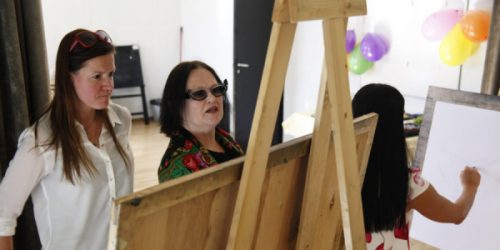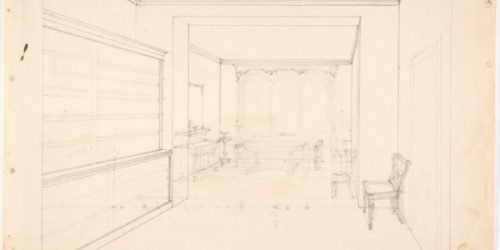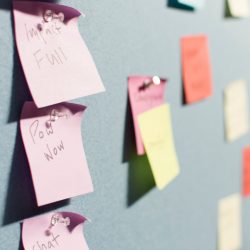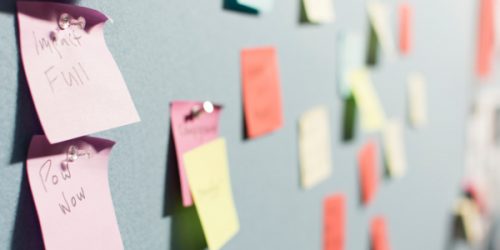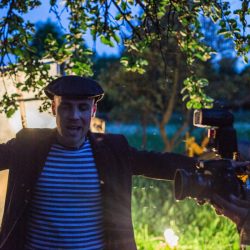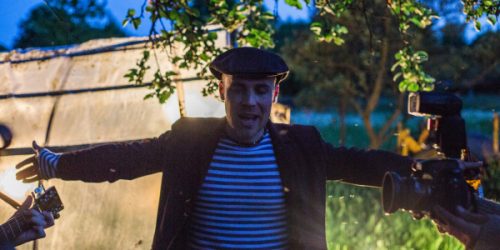Open Academy Courses
Numbers and Cognition in the Urban Environment
Dates: 20-24 August 2018
Volume: 40 hours, 3 ECTS
Location: Department of Architecture at the Estonian Academy of Arts, Pikk tn 20, Tallinn
Number of participants: max 25
Cost: FREE (Please note that this course is meant for higher education students only.)
Registration deadline: 6th of May
In case of high volume of applications, prospective participants are asked to write an essay one A4-format page in length (approximately 250 words).
Content of the course
This workshop is structured on architecture, numbers and cognition with the focus mainly on public space. Two broader topics pervade the workshop. One of them is more physical, involving translating the world into parameters, and the other is mapping social activities. The broad goal is to find connections between the two sets of topics. The environment around us consists of a number of physically countable and measurable parameters, which we can use to describe it (width of a carriageway, location of a cafe). Which parameters are the best for describing or designing the world? As another important topic, we will map the movements or activities of human masses, using photo and image analysis and Wi-Fi positioning to this end. When, why and where are people moving and how long do they stop – this is an important set of topics, because the quality of space is largely dependent on the presence of people. The participants in the summer academy course will be challenged to find relationships between the physical world and human activity. It will be important to find a means and method for measuring and documenting the environment. Cognition referred to in the course name refers to experience that can be used in future to make decisions to design and re-design space. Ideally, we envision the participants who complete the academy to be capable of imagining and perceiving the implications of 1,000 people or 100 cars passing a point.
Picking key parameters (properties) from this environment has long received attention from urbanism scholars: William H. Whyte, who attempted to trace patterns of use of public space, or Kevin Lynch, who tried to find the mental model people use to understand a city.
The late 20th century brought a rise in computing power, which has resulted in change in the accuracy and use of many calculations. In the past, it was not conceivable to calculate trajectories from one building to another manually, but it is now possible. Alongside this trend, a completely new field has arisen: various kinds of simulations. Simulations make it possible to model traffic, pedestrians or both at the same time. Gathering data has become more intensive with a focus moving from gathering qualitative data to collecting quantitative data. A large part of the summer school involves field observations, which helps instil intuition in participants as to what a given indicator means. This will also give them a clearer understanding of the computational processes and outcomes and they will be able to rationally assess the outcomes of some simulation or facts presented to them.
Participants will become well-versed in methods and means for quantitatively and qualitatively documenting the street-level space, which can in turn later be used for analysis of other places. The participant will also receive an overview of and access to software used in the framework of the workshop. At the end of the summer school, all of the data that was gathered will be made public to allow third parties to use them in their projects – for example, to plan more fluid, safer traffic conditions.
Numbers and Cognition in the Urban Environment
Dates: 20-24 August 2018
Volume: 40 hours, 3 ECTS
Location: Department of Architecture at the Estonian Academy of Arts, Pikk tn 20, Tallinn
Number of participants: max 25
Cost: FREE (Please note that this course is meant for higher education students only.)
Registration deadline: 6th of May
In case of high volume of applications, prospective participants are asked to write an essay one A4-format page in length (approximately 250 words).
Content of the course
This workshop is structured on architecture, numbers and cognition with the focus mainly on public space. Two broader topics pervade the workshop. One of them is more physical, involving translating the world into parameters, and the other is mapping social activities. The broad goal is to find connections between the two sets of topics. The environment around us consists of a number of physically countable and measurable parameters, which we can use to describe it (width of a carriageway, location of a cafe). Which parameters are the best for describing or designing the world? As another important topic, we will map the movements or activities of human masses, using photo and image analysis and Wi-Fi positioning to this end. When, why and where are people moving and how long do they stop – this is an important set of topics, because the quality of space is largely dependent on the presence of people. The participants in the summer academy course will be challenged to find relationships between the physical world and human activity. It will be important to find a means and method for measuring and documenting the environment. Cognition referred to in the course name refers to experience that can be used in future to make decisions to design and re-design space. Ideally, we envision the participants who complete the academy to be capable of imagining and perceiving the implications of 1,000 people or 100 cars passing a point.
Picking key parameters (properties) from this environment has long received attention from urbanism scholars: William H. Whyte, who attempted to trace patterns of use of public space, or Kevin Lynch, who tried to find the mental model people use to understand a city.
The late 20th century brought a rise in computing power, which has resulted in change in the accuracy and use of many calculations. In the past, it was not conceivable to calculate trajectories from one building to another manually, but it is now possible. Alongside this trend, a completely new field has arisen: various kinds of simulations. Simulations make it possible to model traffic, pedestrians or both at the same time. Gathering data has become more intensive with a focus moving from gathering qualitative data to collecting quantitative data. A large part of the summer school involves field observations, which helps instil intuition in participants as to what a given indicator means. This will also give them a clearer understanding of the computational processes and outcomes and they will be able to rationally assess the outcomes of some simulation or facts presented to them.
Participants will become well-versed in methods and means for quantitatively and qualitatively documenting the street-level space, which can in turn later be used for analysis of other places. The participant will also receive an overview of and access to software used in the framework of the workshop. At the end of the summer school, all of the data that was gathered will be made public to allow third parties to use them in their projects – for example, to plan more fluid, safer traffic conditions.
Clay 3D Printing
Dates: 13-17 August 2018
Volume: 40 hours, 2 ECTS
Location: Estonian Academy of Arts
Number of participants: max 13
Cost: FREE (Please note that this course is meant for higher education students only.)
Registration deadline: 6th of May
In addition to the general required materials, candidates are expected to submit a letter of motivation explaining why they are applying and what is their experience with 3D printing so far (max A4).
The Department of Ceramics at the Estonian Academy of Arts invites you to participate in an international Clay 3D Printing workshop. Ceramics have properties that allow it to be used in the most disparate fields. We usually don’t consider that ceramics are all around us, not just in kitchenware, but also in bathrooms, swimming pools and public interiors, and that stoves and fireplaces, even houses, are made of fired clay. Top-quality ceramics can be found in medical equipment, audio technology and air and space industry. Clay is sensitive, flexible and versatile material with its’ own technological limits which the participants will learn during the workshop.
3D printing in clay allows us to print three-dimensional objects or models at lower cost and more easily. For ceramists, it represents a new technological possibility, while for others it gives a chance to convert digital sketches into real three-dimensional objects. During this course, participants will learn the technical skills of 3D printing and printing in clay: creating G-code and STL files, plus preparation of the clay and printing. The aim of the course is to use innovative thinking to discover new ways of printing, using clay and the printed ceramics. The end of the workshop will feature a pop-up exhibition of the objects created.
The workshop is aimed at ceramics, architecture and design students, but admission is open to all students who have had experience with 3D printing and know how to create 3D files. Every participant needs to bring their own laptop. All other materials are provided, and students may keep the objects they print.
Homework assignment for selectees:
1) students will be asked to bring one of their 3D-file, print ready
2) students will be asked to come up with a design they would like to execute in the workshop. They will be asked to give a presentation on the design in person. As in a hackathon, they will then set to work on the problem.
More information and link to registration: https://www.artun.ee/summeracademy/clay-3d-printing/
Clay 3D Printing
Dates: 13-17 August 2018
Volume: 40 hours, 2 ECTS
Location: Estonian Academy of Arts
Number of participants: max 13
Cost: FREE (Please note that this course is meant for higher education students only.)
Registration deadline: 6th of May
In addition to the general required materials, candidates are expected to submit a letter of motivation explaining why they are applying and what is their experience with 3D printing so far (max A4).
The Department of Ceramics at the Estonian Academy of Arts invites you to participate in an international Clay 3D Printing workshop. Ceramics have properties that allow it to be used in the most disparate fields. We usually don’t consider that ceramics are all around us, not just in kitchenware, but also in bathrooms, swimming pools and public interiors, and that stoves and fireplaces, even houses, are made of fired clay. Top-quality ceramics can be found in medical equipment, audio technology and air and space industry. Clay is sensitive, flexible and versatile material with its’ own technological limits which the participants will learn during the workshop.
3D printing in clay allows us to print three-dimensional objects or models at lower cost and more easily. For ceramists, it represents a new technological possibility, while for others it gives a chance to convert digital sketches into real three-dimensional objects. During this course, participants will learn the technical skills of 3D printing and printing in clay: creating G-code and STL files, plus preparation of the clay and printing. The aim of the course is to use innovative thinking to discover new ways of printing, using clay and the printed ceramics. The end of the workshop will feature a pop-up exhibition of the objects created.
The workshop is aimed at ceramics, architecture and design students, but admission is open to all students who have had experience with 3D printing and know how to create 3D files. Every participant needs to bring their own laptop. All other materials are provided, and students may keep the objects they print.
Homework assignment for selectees:
1) students will be asked to bring one of their 3D-file, print ready
2) students will be asked to come up with a design they would like to execute in the workshop. They will be asked to give a presentation on the design in person. As in a hackathon, they will then set to work on the problem.
More information and link to registration: https://www.artun.ee/summeracademy/clay-3d-printing/
The Contemporary Art Field in Estonia
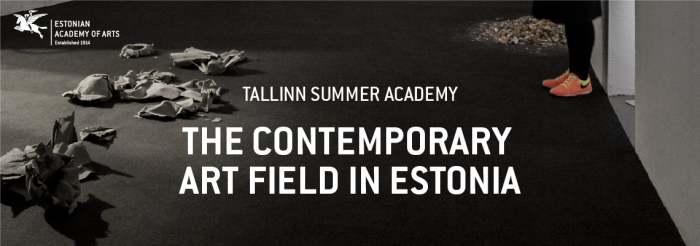
The Contemporary Art Field in Estonia


